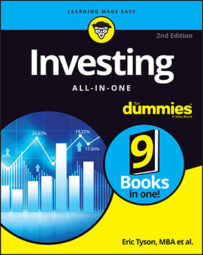That works out to about 8.8 percent a year on average. During that same time period, the Russell 3000 index, which measures the performance of the stock market in general, gained 7.5 percent in value including dividends, according to Russell Investments. Buffett’s longer-term record is strong, too. No wonder he’s called the Oracle of Omaha.
Trying to figure out Buffett’s secret is the investment world’s equivalent of the search for the Holy Grail. Scores of investors make the pilgrimage to Berkshire Hathaway shareholder meetings in Omaha each year. Hour-long lunches with Buffett auction off on eBay for hundreds of thousands of dollars. And there are countless books on Buffett, most notably Robert G. Hagstrom’s The Warren Buffett Way (Wiley).
Interestingly, though, Buffett doesn’t make much of a secret of his techniques. Every year, in his letter to shareholders and also in Berkshire Hathaway’s Owner’s Manual, he paints a picture of his approach. If you’re looking to up your fundamental analysis game, you’re wise to learn from the master. Much of Buffett’s approach is based in key elements of fundamental analysis, including the following:
- Invest as an owner, not a trader. Buffett is very clear that he looks at an investment not as a short-term trade but as a long-term relationship. Berkshire Hathaway will often invest in a company and hold it for a very long time, perhaps never selling the position. “Regardless of price, we have no interest at all in selling any good businesses that Berkshire owns,” according to Berkshire’s Owner’s Manual.
- Consider carefully a company’s intrinsic value. Buffet repeatedly discusses intrinsic value, which is a measure of what a company is truly worth. Intrinsic value is how much cash a company is expected to generate over its lifetime, which is a good measure of what it’s worth. Buying a stock for less than its intrinsic value gives you a bit of a margin of safety.
- Analyze management. Buffett routinely says even a seemingly ho-hum company can generate dazzling returns with a good management team at the helm. For that reason, Buffett will often leave the top officers and directors of a company in place, even after buying a company.
- Stick with businesses you understand. The better you grasp how a company makes its money and operates, the more informed you’ll be after reviewing its financial statements. You’ll also know better what to look for, because every industry and company has unique financial traits.
- Find businesses that have a real advantage. In capitalism, if a company has a good idea, other firms will try to copy it and steal market share. Buffett combats that by investing in businesses with a strong brand or unique product, such as Coca-Cola.
Many investors hope to profit like Buffett without actually learning fundamental analysis. There are plenty of ways to do that. Investors who want to ride Buffett’s coattails could just invest in Berkshire Hathaway’s shares. Others try to mimic what Buffett does. Some investors try to figure out what Buffett is investing in by reading Berkshire Hathaway’s annual report, a document that discloses all the firm’s large holdings.
It’s never a good idea to blindly buy stocks just because another investor did. Still, reviewing the stocks that pass Buffett’s fundamental analysis might be a good place to start. The list of Berkshire Hathaway’s holdings in publicly traded companies can be found in the company’s annual reports. This table shows you what some of Berkshire’s biggest positions were at the end of 2015.| Company | % of company owned by Berkshire | Market value of holding end of 2015 ($ Billions) |
| Wells Fargo | 9.8 | $27.2 |
| Coca-Cola | 9.3 | $17.2 |
| American Express | 15.6 | $10.5 |
| IBM | 8.4 | $13.8 |
| Walmart Stores | 2.0 | $3.6 |
Source: Berkshire Hathaway Annual Report
Blindly following moves of top investors isn’t an instant route to riches. That’s especially the case when trying to take cues from Buffett. Buffett constantly reminds his shareholders that he plans to hold investments for a long time. And his holdings can also suffer large losses in the short term. For instance, had you bought Tesco at the beginning of 2008 after seeing it was a top holding at the end of 2007, you would have suffered a 75 percent loss. Shares in American Express — a big holding going into 2014 — lost a quarter of their value in 2015; IBM dropped about 15 percent, while Walmart fell by nearly a third. Sometimes even Buffett’s speculative plays don’t pay off right away.

